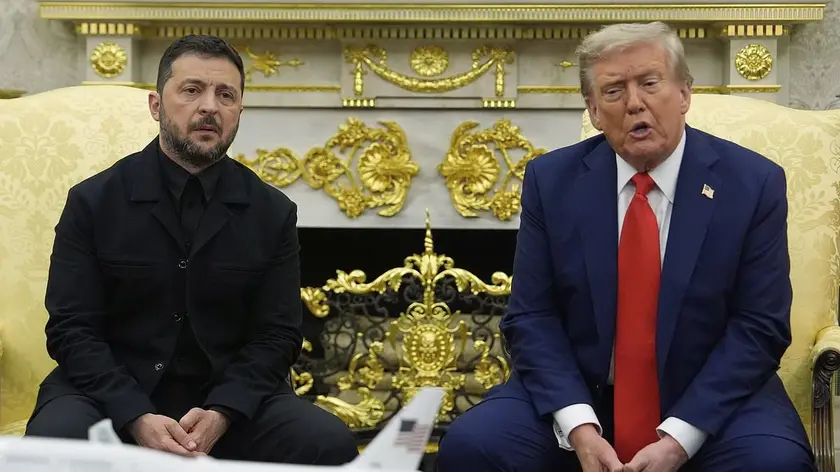T4K3.news
Trump pressures Zelensky with map at White House talks
A map showing Ukrainian territory under Russian control frames a White House meeting as Trump hosts European leaders in pursuit of a ceasefire.
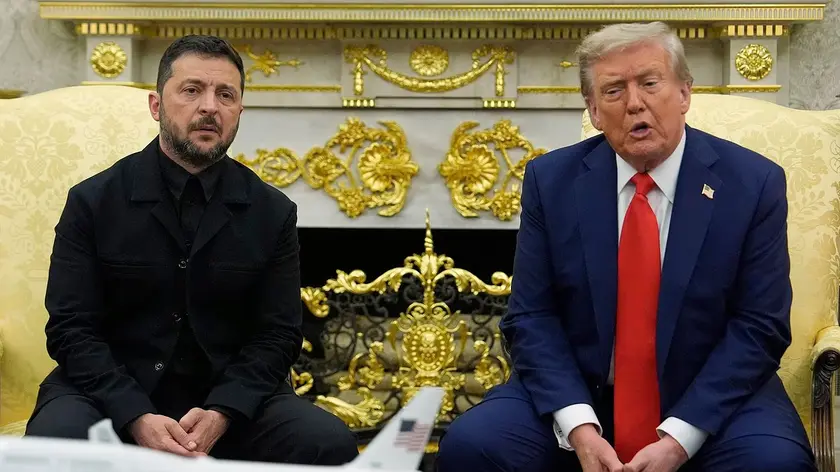
A White House meeting features a map showing parts of Ukraine under Russian control as Trump hosts European leaders in a push for a ceasefire.
Trump pressures Zelensky with map at White House talks
President Donald Trump showed Zelensky a large map during their White House meeting, illustrating roughly 20 percent of Ukraine under Russian control. The gesture appears to be a bargaining signal aimed at nudging Zelensky toward territorial concessions as part of any potential peace framework. Zelensky was joined by a group of European leaders including Keir Starmer, Emmanuel Macron, Giorgia Meloni and Ursula von der Leyen, underscoring a coordinated push for a ceasefire. The encounter comes after a separate high level exchange with Vladimir Putin in Alaska that yielded no ceasefire agreement.
Analysts caution that pressuring Ukraine on land concessions could undermine Kyiv’s negotiating position and provoke political backlash at home and abroad. The scene signals a shift toward a more public, alliance driven approach to diplomacy, but the path to a durable ceasefire remains uncertain. The gathering shows how diplomacy now blends domestic politics with foreign policy in a high stakes moment for the war and for alliance cohesion.
Key Takeaways
"A map is a bargaining chip that speaks louder than words"
editorial highlight on symbolism in the talks
"Diplomacy lives in rooms full of pressure and optics"
comment on the atmosphere of the White House meeting
"Allies judge the price of peace by terms that emerge"
analysis of alliance dynamics
The use of a map as a bargaining lever reveals how domestic audiences influence foreign policy and how symbolism can carry political weight beyond words. It tests Zelensky's resolve while raising questions about long term consequences for Ukraine’s sovereignty and for international legitimacy. The moment exposes the fragility of unity among allies when core compromises are on the table and public scrutiny intensifies.
This episode fits a broader trend in modern diplomacy where optics and symbolic gestures shape negotiations as much as plans and guarantees. Without clear guardrails, such tactics risk setting precedents that could complicate future deals and fuel volatility in public opinion and markets alike. The next moves will reveal whether symbolism yields a path to peace or deepens disagreements among partners.
Highlights
- A map is a bargaining chip that speaks louder than words
- Diplomacy lives in rooms full of pressure and optics
- Allies judge the price of peace by terms that emerge
- Symbolic gestures carry weight even when the path is unclear
Political sensitivity and potential backlash
The piece discusses pressure to concede territory in a conflict, which could trigger political backlash at home and abroad, affect alliance dynamics, and draw investor or public reaction concerns.
Diplomacy moves quickly when symbols speak as loudly as words
Enjoyed this? Let your friends know!
Related News
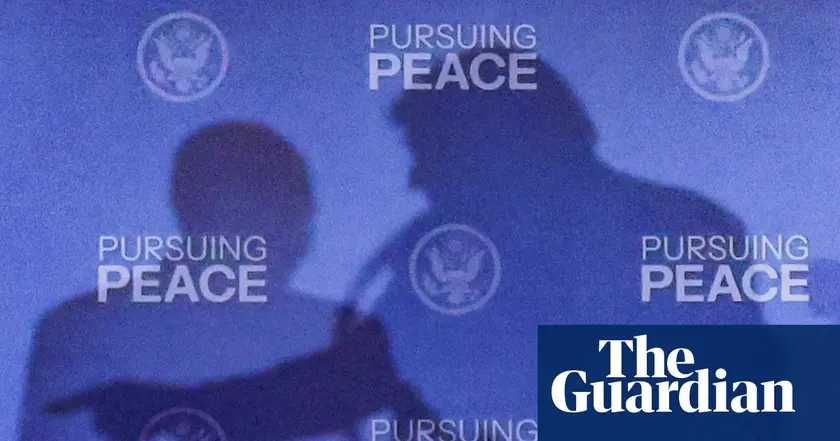
Ukraine at stake as land swap talks surface

Putin signals Donetsk focus in Alaska talks

Europe to fund Ukraine defense continues
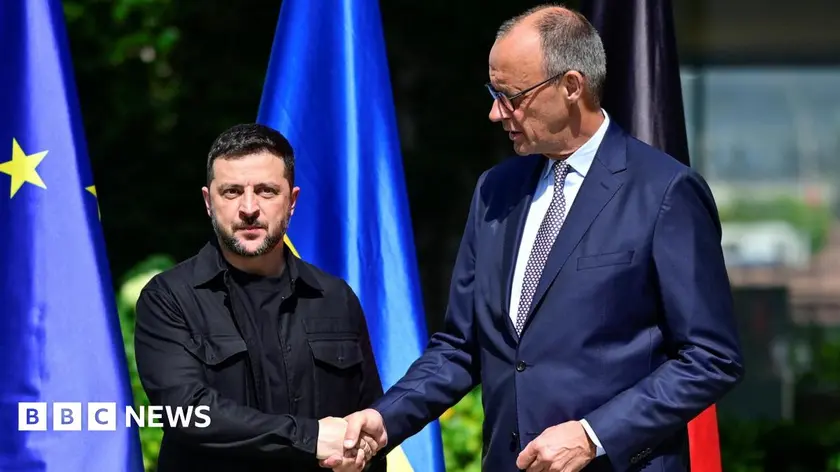
Zelensky in Berlin as Trump heads to Russia talks
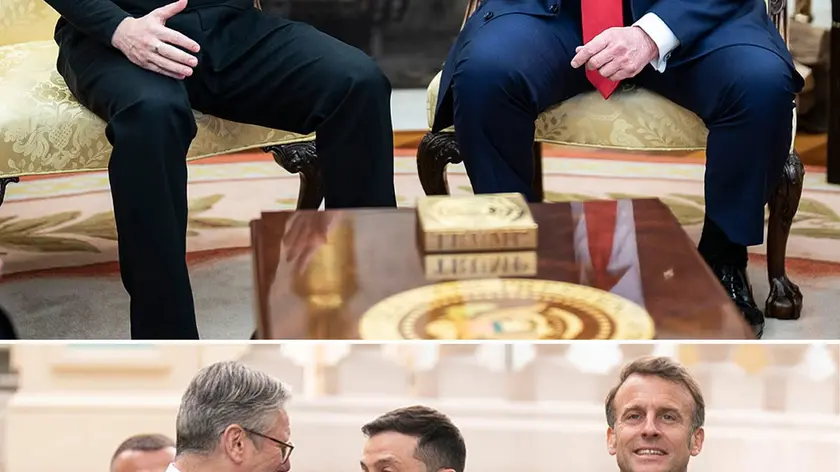
Ukraine talks in Washington
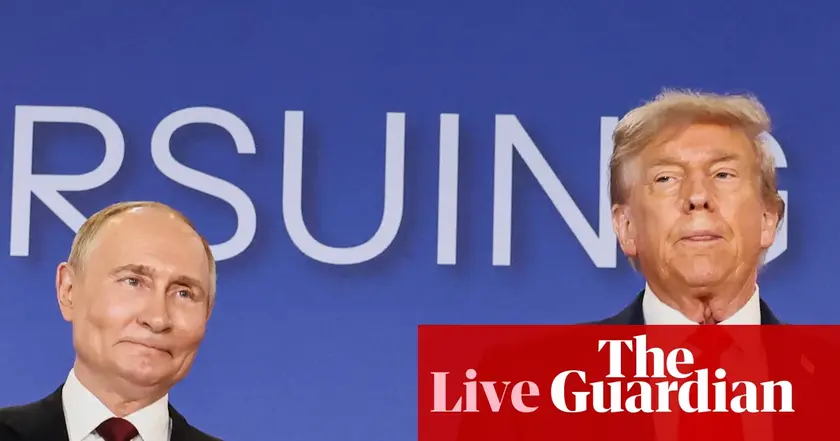
Trump Putin Alaska summit yield no breakthrough

Peace terms collide with battlefield reality
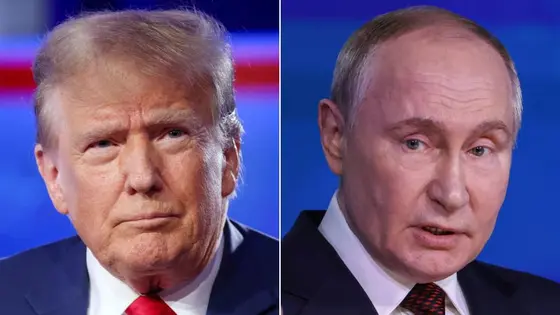
Trump plans talks with Putin as sanctions loom
